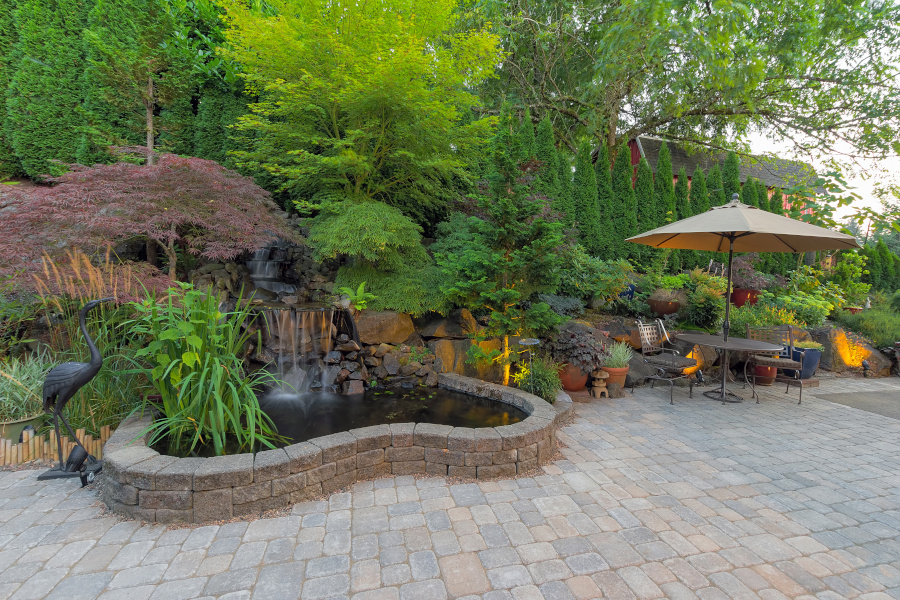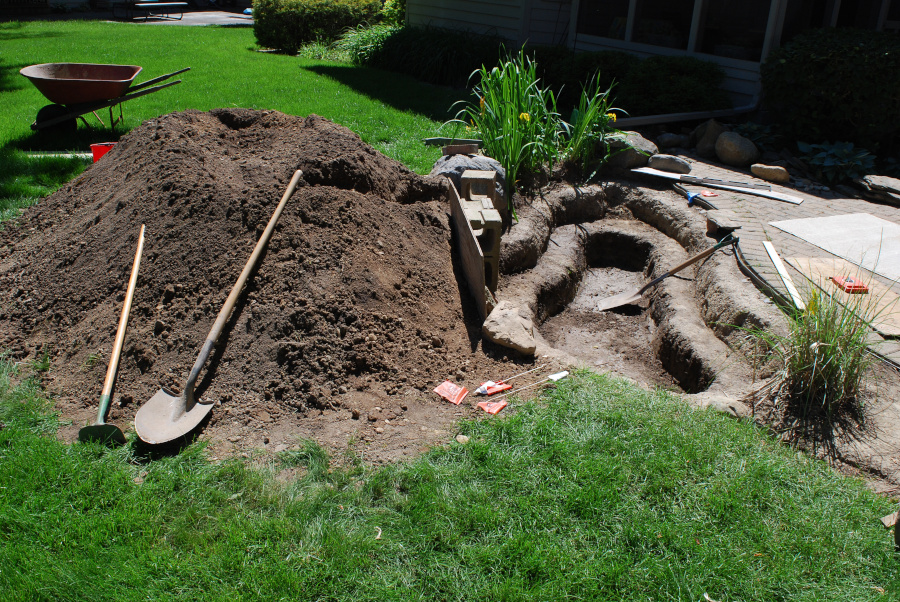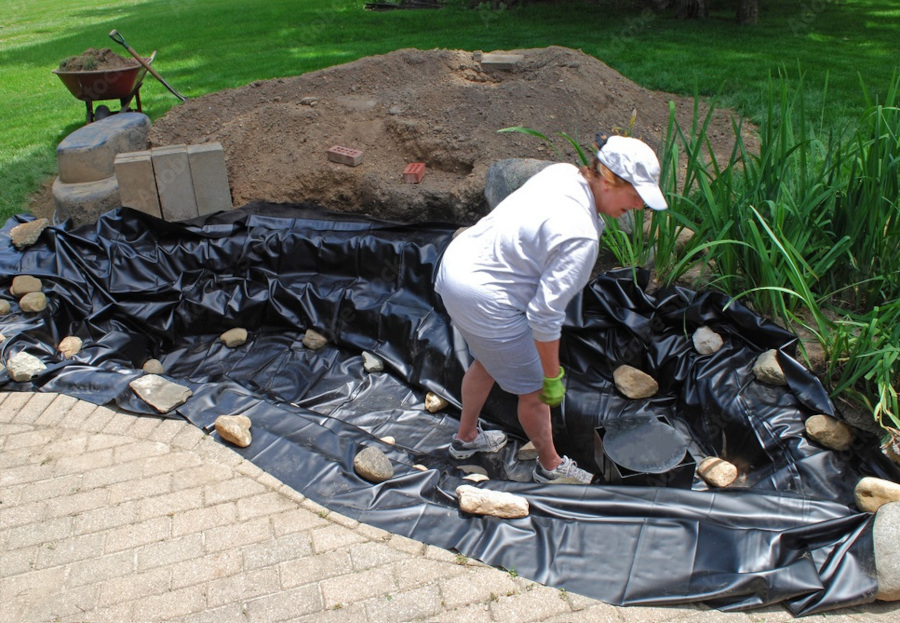Everything You Need to Know to Build the Perfect Backyard Pond
Have you seen some backyard ideas that have gotten you inspired but you're not sure how to do it? Here is a complete guide on how to DIY a backyard pond at a minimal cost.

The construction of a backyard pond is relatively straightforward. However, there might be some extra tools and materials you'll need to get. You can usually find your supplies at your local hardware or home improvement store.
Backyard Pond Designs
First, you should figure out what your backyard pond is going to look like. Use your creativity for backyard pond designs. Ponds can be made into any shape or size as desired. Research what plants and fish will be best suited for your type of pond and the weather in your area.
From here, you can start to work out a budget based on what you'll need, such as tools, materials, plants, fish, decorative stones, etc.
There are a couple of other considerations should you decide to put fish into your pond. Fish will have some additional requirements that might affect the design of your pond. The most important being aeration and pond depth.
Aeration is essential to providing vital oxygen to the fish. If you're building a backyard pond with a waterfall or installing a fountain in your pond, that will automatically improve aeration.
Pond depth will be crucial if you live somewhere that gets really cold in winter. If your backyard pond is too shallow, all of the water will freeze solid and kill your fish. So the pond needs to be deep enough that only the top will freeze over while the fish hibernate at the bottom during those winter months.
Select a Location
The ideal location for a backyard pond is the one that is depressed already. If you've got a spot that's already forming a hole, it can help in saving the cost of extra digging. Try to avoid having the pond under a tree - otherwise, you'll just make your life difficult by having to constantly scoop all the leaves and debris out of your pond.
You must ensure that the pond is not located above sewer or underground cables. Refer to the utility drawings of your house to get an idea about the location of these underground lines.
Digging the Backyard Pond
Mark the area with spray paint where you want to build the pond. If you plan to use a pre-built shell for the liner, make sure that you mark the area to be slightly bigger.
Begin by digging a few inches into the soon-to-be hole. This part of the digging can be done manually. You just want to create a shallow outline you can easily follow as a guide.
Next up, you want to start going for depth. For this part, we recommend you get some heavy equipment like a mini excavator to help out. It's easy to rent earth-moving machines, and will be a huge time-saver. Not to mention help you avoid any potential strain from hours of hard labor.
Unless you're already familiar with using some earth-moving machinery, you should hire a professional operator to get the job done. These operators will make short work of digging out that pond for you, which means you're not liable for any damages or injury.

Install the Pond Liner

After digging the hole, the next step is to install the liner for your backyard pond. Why? Because it will prevent the pond water from seeping into the ground.
You have the option of a hard shell in a pre-built shape or a flexible liner.
The shell-type liner provides a definite shape for the pond, which means you don't have to be overly creative with your backyard pond ideas. If you use a plastic liner, always dig a hole bigger than the liner, and the compacted soil should support it. Compact this soil properly during backfilling.
The flexible one will allow you to customize your backyard pond designs to your specifications. Just be aware that the flexible liner will take on the shape of the hole you dug, so you may need to sculpt the area a bit before laying down the liner.
Flexible liners are more prone to getting punctured. Avoid getting a leak in your liner by following these simple tips:
- Inspect the pond hole before installing the liner to remove any sharp rocks or debris that might punch a hole in the liner.
- Avoid walking directly on the liner, or use soft-soled shoes to walk on it.
- Don't stretch the liner too tightly. Spread it loosely on the ground.
Pond Filter and Aeration Installation
To keep the pond water moving, you need to install a filter and pump. Whatever pump you purchased will have specific instructions on how to install your waterfall pump. Just follow their directions.
Using a filtration system helps keep the water clean so the water doesn't go stagnant. The filter's size depends on the volume of water in the pond. Again, this information should be one you purchased.
Aeration is only necessary if you're going to have fish and didn't happen to build a waterfall or fountain into the pond. In this instance, you'll need pond aeration pumps or underwater plants like eelgrass, hornwort, or pondweed to get oxygen into the water.
Adding Plants and Fish
You can enhance the beauty of your backyard pond by adding plants and fish to it.
Plants will improve the overall aesthetic of your pond and can also provide nutrition for the fish.
Putting fish or frogs in your backyard pond is a valuable addition. Not only do they enhance the beauty of your pond, but they eat mosquitoes. They also aid in the ongoing maintenance of your pond since the fish will consume algae and other unwanted water growth.
Maintenance Requirements
After your pond is complete, you'll need to perform periodic maintenance to keep it healthy.
Algae will build up regularly, but it's not very difficult to remove it if routine maintenance is done. You can add more underwater plants to improve water oxygenation and avoid algae buildup.
If there are trees nearby, you must remove the leaves to keep the pond clean. This will prevent the production of harmful gasses when the leaves decay in water.
Every season, you should thoroughly clean your backyard pond to remove any buildup. This includes scrubbing down the liner. Do not use harsh chemicals or bleach if you keep fish in your pond or if animals drink from it.